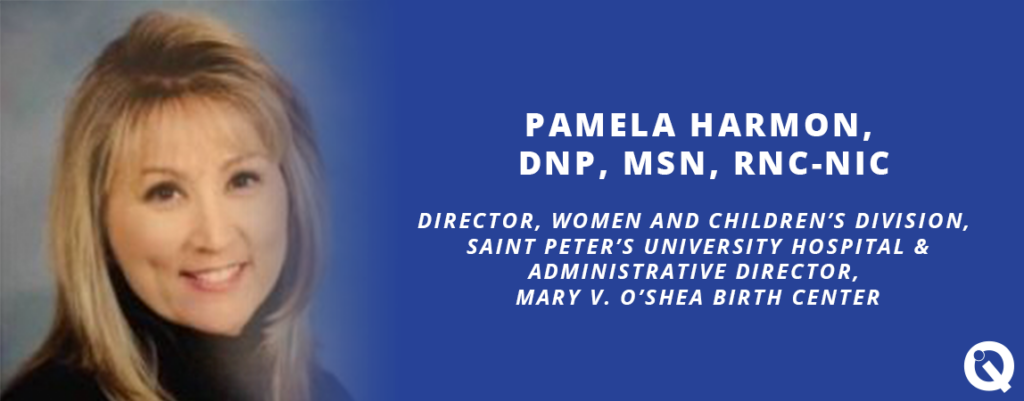Pamela Harmon, DNP, MSN, RNC-NIC, Director, Women and Children’s Division, Saint Peter’s University Hospital and Administrative Director of the Mary V. O’Shea Birth Center.
Saint Peter’s University Hospital and its birth center have truly embraced Team Birth, an evidence-based model for better provider and patient communication during the birthing experience. How do you see Team Birth supporting your patients?
In the United States, the high spending on maternity care has not translated into better maternal outcomes, especially for women of color, who really have a heightened risk for negative outcomes. TeamBirth enables the birthing mother to have a voice and to be a part of the care team. TeamBirth supports every woman who is going through the birthing process and provides her with the ability to share her preferences and concerns as well as any issues she may have.
The Mary V. O’Shea Birth Center is separate from the hospital. How do you see a separate facility working to improve the birth experience?
Our birth center has a separate entrance and allows women who are low risk to have the birth experience of their choice and to be supported by family members as well as the birth team. There’s a homelike environment that is high touch, but low tech. We reduce the amount of people you would ordinarily see in labor and delivery. Typically, when women are admitted to labor and delivery unit there’s more medical intervention. The advantage of our birth center is that we have quick access to that medical intervention if there’s ever any type of emergency with the mom or baby. Our response team can be there within seconds.
How do midwives fit into the hospital and the Birth Center model of care?
Midwives have been great role models from the time we introduced them into the hospital, even before the birth center was up and running. They have been able to show best practices to support a physiologic birth — to our residents, nurses, and the entire team.
They are role models for the practice of involving the women in the decision-making process. Shared decision making, that’s very important to midwives. We want our patients to feel a part of their birthing experience. With the role models of midwives, our entire team is better prepared to provide that experience. Maybe in the past the teams were just talking to the women, but not taking that pause to say, “What questions do you have? What’s important to you?” Midwives see birth as a natural process whereby the laboring mother’s wishes and concerns are heard.
How do you see doulas supporting your efforts for culturally competent care?
Doulas have been around for centuries. Doulas support a laboring mom’s needs. Oftentimes, those needs are put on an inexperienced person, whether it’s a family member or the father or partner. They are not experienced and educated about the birth process to provide the support she needs. Yet a doula can provide that culturally competent care because they’re really eliciting the person’s preferences and experiences into the birthing experience. And without having that doula, the woman’s preferences may not get raised with the care team. We have truly embraced doulas and see them as an advocate for the patient and an important part of the care team.
Finally, we like to ask a question beyond a person’s professional work. Can you tell us who your favorite New Jersey artist is, i.e., singer, writer, actor?
I would have to say Jon Bon Jovi. His music is great. His lyrics, “It’s My Life,” about living your own life, I have taken from that. And I respect how he has given back to the community. His JBJ Soul Kitchen treats everyone the same … whether you have money to pay or not. Everyone is equal and is respected. I also work to create trusting, respectful care … and so I relate to what he is trying to do for the community.

